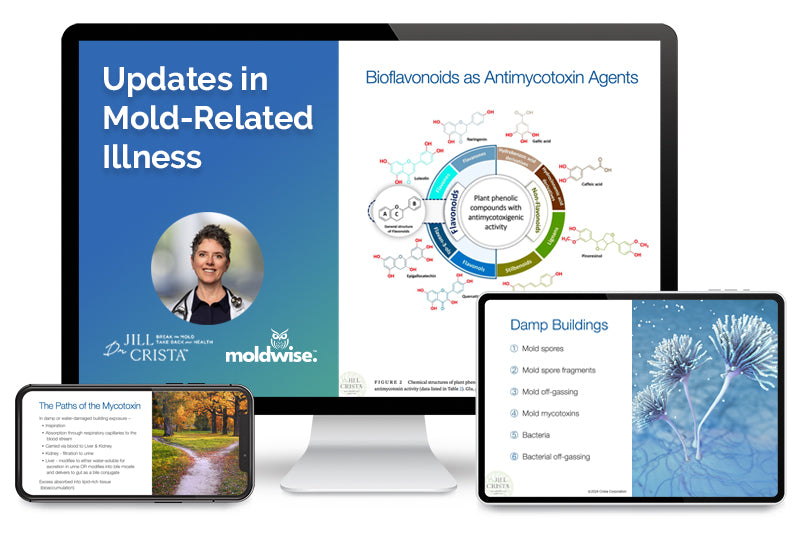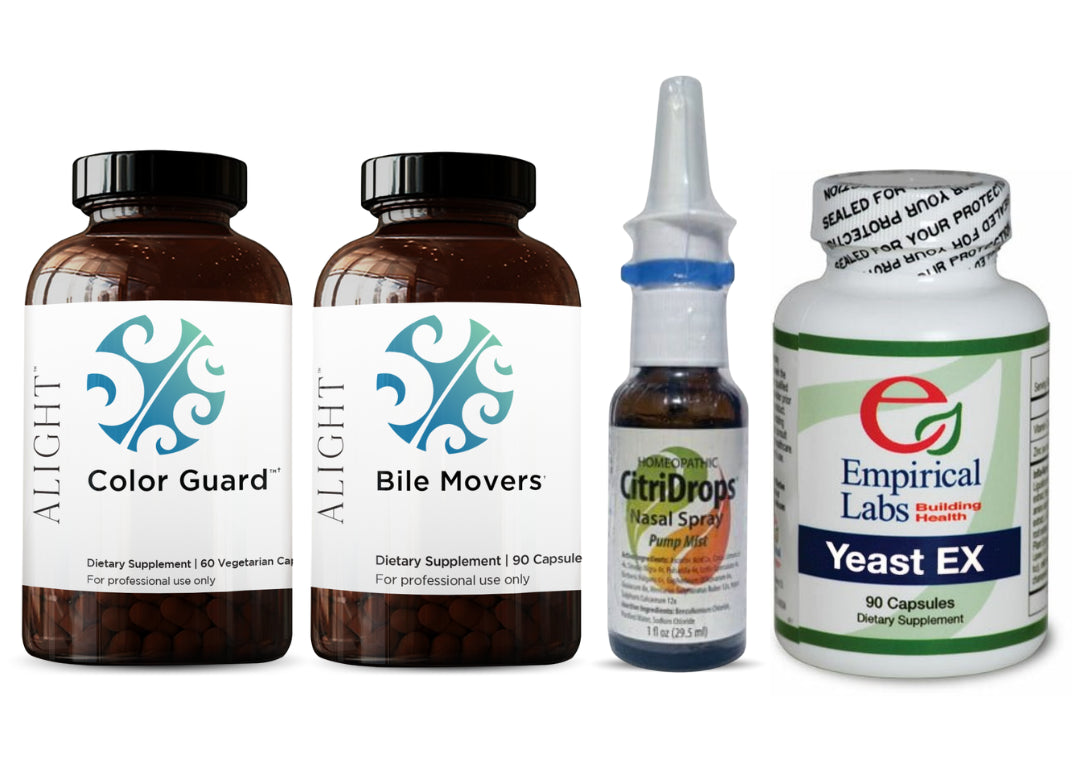Wondering if humic and fulvic acids can help with mold or Lyme recovery? It’s a common question! As a seasoned mold-treating doctor and author o f Break the Mold, I love these compounds, but use them differently than you might expect.
Today I’ll share why I choose humic and fulvic for mineral support, not binding, and how they can benefit you. Ready to conquer mold and feel stronger? Read on!
What Are Humic and Fulvic Acids?
Humic and fulvic acids are natural compounds found in rich, organic soil. They’re basically fermented soil juice, packed with chelated (easy-to-absorb) minerals. Here’s the scoop:
- Nature’s Gift: They come from decomposed plant matter, delivering trace minerals that your body craves.
- Not Typical Binders: While some studies suggest they bind mycotoxins in food, I use them for mineral replacement, not bile binding.
- Health Boost: They’re especially helpful for those with chronic Lyme or nutrient absorption issues.
Think mold is affecting you? Take my Mold Questionnaire to check.
Why I Use Them (Not as Binders!)
Do I use it as a binder? Not really. Instead, I value humic and fulvic for their mineral-replenishing power, especially in Lyme and gut health cases. Here’s why:
- Mineral Replacement: They provide chelated minerals for those low in trace elements, unlike binders like psyllium husk that target bile.
- Mold Context: In water-damaged buildings, mycotoxins are inhaled and enter the bloodstream, requiring bile-focused binders (e.g., insoluble fiber) over humic/fulvic.
- Chronic Lyme Support: I’ve used them for years to help Lyme patients with nutrient deficiencies, caused by the gut destroying effects of Lyme and co-infections.
Explore the binders in my store for my go-to bile binders.
Who Benefits from Humic and Fulvic?
Not everyone needs humic and fulvic, but I find that they shine for specific folks. In my patient base, the people who benefit from humic and fulvic acid have these traits:
- Low Trace Minerals: Often due to poor absorption or chronic illness.
- Bad Bacterial Load: More bacterial issues (in the gut or home) than mold.
- Nutrient Absorption Issues: Trouble getting nutrients from food.
- Chronic Infections or Parasites: Common in Lyme or mold-sick patients.
Symptoms that suggest humic/fulvic might help:
- Weak or peeling fingernails
- Muscle pain or cramping (especially post-exercise)
- Salt cravings
- Frequent illness or low immunity
- Heart palpitations
- Numbness or tingling sensations
How to Use Them Safely for Mold Recovery
Humic and fulvic can be a great addition, but caution needs to be taken, especially for mold-sick folks. Here’s how to use them wisely:
- Choose Quality: Choose a brand that’s been tested to be free of heavy metals like lead. I love Mother Earth Labs’ liquid form (in glass, to avoid plastic migration) for its bland taste and kid-friendliness.
- Start Slow: As a fermented product, it may cause reactions in early mold detox phases—listen to your body and add gradually.
- Not for Bile Binding: Use insoluble fiber (e.g., psyllium husk, flax seeds, bran) for bile binding instead, as humic/fulvic excels at mineral support.
Check binders in my store for bile-focused options. And dive into my 9 Things to Know Course for what to do if you’re stuck in mold.
You’re Ready to Boost Your Health!
Humic and fulvic acids aren’t your typical binders—they’re mineral powerhouses that can recharge your body, especially if you’re battling Lyme or low nutrients. By using my tips and exploring binders for bile binders, you’re set to tackle mold smarter.
You’re ready to break the mold and take back your health! Save this guide for your recovery journey, and share it with someone fighting mold or Lyme.
Join my newsletter for more tips on mold and Lyme recovery.
Disclaimer This content is health information and not intended as personal medical advice. Viewing will not establish a doctor-patient relationship. It is not intended to diagnose, treat, cure, or prevent any disease or medical condition. The information discussed is not intended to replace the advice of your healthcare provider. Reliance on information provided by Dr. Jill Crista, employees, or others appearing at the invitation of Dr. Crista is solely at your own risk.







